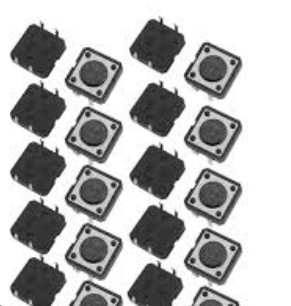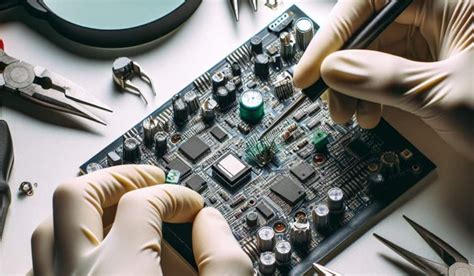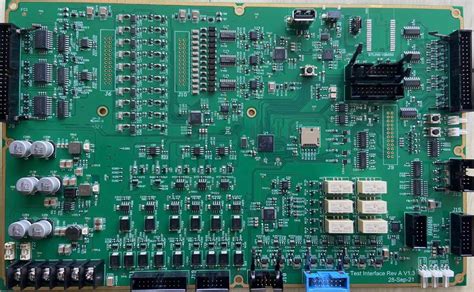Top Circuit Card Assembly Manufacturers Driving Innovation Forward
Key Takeaways
The circuit card assembly (CCA) industry is witnessing transformative shifts driven by a combination of innovation and technology. Leading pcb assembly manufacturers are at the forefront of this change, implementing advanced techniques that not only enhance efficiency but also improve the overall quality of printed circuit boards (PCBs). The competitive landscape is characterized by the commitment these manufacturers show towards adopting new technologies and methodologies, which are crucial for the evolution of pcba processes. Many companies are investing in automated systems that streamline operations while maintaining strict quality assurance protocols. This automation not only reduces human error but also optimizes production cycles, enabling a quicker turnaround for businesses in various sectors. Additionally, as the market grows, it faces several challenges including supply chain complexities and rising material costs, but these hurdles also present opportunities for innovation. The emphasis on quality and performance remains paramount, as manufacturers recognize that delivering superior products is essential to gaining a competitive edge in this dynamic environment.
Introduction to Circuit Card Assembly Manufacturing
Circuit card assembly (CCA), commonly referred to as pcb assembly or pcba, plays a vital role in the manufacturing of electronic components. This complex process involves the construction of printed circuit boards (PCBs) that serve as the backbone for electronic devices, ranging from consumer electronics to industrial machinery. With a growing demand for sophisticated electronics, the industry has evolved significantly, integrating innovative techniques and cutting-edge technologies that enhance efficiency and product quality.
Manufacturers have adopted advanced methods such as surface mount technology (SMT) and through-hole technology, which allow for higher density connections on circuit boards. These techniques not only improve performance but also cater to the miniaturization of electronic components—a crucial trend in today’s market. Moreover, the commitment to stringent quality assurance practices ensures that every PCB assembly meets international standards, significantly reducing the risk of failures in critical applications.
As competition intensifies among leading circuit card assembly manufacturers, collaboration with technology providers has become increasingly important. Companies are investing in automation and software solutions that facilitate real-time monitoring and management of production lines. This shift not only streamlines operations but also positions manufacturers to respond swiftly to changing market demands.
In summary, as we delve deeper into this article, we will uncover how these key players are driving innovation forward in the CCA landscape while maintaining a steadfast focus on quality and efficiency.
“Innovation is at the heart of circuit card assembly manufacturing; it fuels competitiveness and sustainability.”
Key Players in the Circuit Card Assembly Industry
In the ever-evolving field of circuit card assembly, numerous manufacturers stand out as leaders, driving innovation and setting benchmarks for quality and efficiency. These pcb assembly companies leverage novel processes to transform designs into reliable products, ensuring that their pcba solutions not only meet but exceed industry standards. Notable players focus on integrating advanced materials and components within their assembly lines, showcasing a commitment to precision engineering. By employing innovative techniques such as surface mount technology and automated inspection systems, they enhance production speed while maintaining exceptional quality. Furthermore, these manufacturers capitalize on deep market intelligence to quickly adapt to customer needs and technological advancements, keeping them at the forefront of the industry. Their dedication to continuous improvement and sustainable practices paves the way for a new era in circuit card assembly, where they not only compete but inspire change across the manufacturing sector. As such, they remain essential contributors to global supply chains, reflecting a dynamic interplay between technology and craftsmanship in producing high-quality electronic assemblies.
Innovative Techniques Transforming the Circuit Card Assembly Landscape
The circuit card assembly (CCA) landscape is currently undergoing significant transformations, primarily driven by the adoption of innovative techniques that enhance productivity and efficiency. Among these advancements, techniques such as digital twin technology, which creates a virtual replica of a physical assembly line, enable manufacturers to optimize every aspect of the pcb assembly process. This not only streamlines operations but also allows for proactive troubleshooting and predictive maintenance that can preemptively address issues before they arise. Furthermore, the integration of advanced materials in pcba processes contributes to increased reliability and performance of electronic devices, fostering sustainability in production practices. Manufacturers are also harnessing data analytics to glean insights from production data, which facilitates continuous improvement and helps in tailoring processes to meet specific customer requirements. These innovative approaches pave the way for a more agile and responsive circuit card assembly sector, positioning key players to meet evolving market demands while maintaining a strong commitment to quality assurance.
Cutting-Edge Technologies Shaping the Future of Manufacturing
The landscape of pcb assembly is rapidly evolving, thanks to the integration of advanced technologies that are transforming the way manufacturers operate. One of the most significant trends is the adoption of automation within the pcba process, which enhances efficiency and reduces human error. Manufacturers are increasingly utilizing robotic automation to handle delicate assembly tasks, allowing for greater precision and speed. Furthermore, innovations such as 3D printing are enabling companies to design and produce complex circuit board structures with less material waste and shorter lead times. In addition to automation, machine learning algorithms are being implemented to improve quality control processes in pcb assembly, allowing for real-time monitoring and adjustments during production. These technologies work together to not only boost productivity but also enhance the sustainability of manufacturing processes. As companies focus on reducing their carbon footprint, technologies that promote energy efficiency and waste reduction are becoming integral to production strategies. The ongoing investment in these cutting-edge technologies is pivotal for manufacturers seeking to maintain a competitive edge in an increasingly global market.
Quality Assurance Practices Among Top Manufacturers
In the world of pcb assembly and pcba, maintaining high standards of quality is crucial for manufacturers to ensure reliability and performance in their products. Leading manufacturers implement rigorous quality assurance practices to enhance the integrity of their assemblies. These practices often involve comprehensive inspection processes at various stages of production, including automated optical inspection (AOI) and functional testing, which help in identifying any defects early in the manufacturing cycle. Additionally, many companies are adopting advanced statistical process control (SPC) techniques to monitor their production environments, ensuring that deviations from quality standards are swiftly addressed. The use of traceability systems further amplifies quality management by providing thorough documentation throughout the assembly process, allowing for immediate feedback and correction if needed. Furthermore, collaboration with suppliers is essential; top manufacturers engage in close partnerships to guarantee sourcing high-quality components that meet their stringent standards. As these circuit card assembly manufacturers continue to evolve their quality assurance methodologies, they not only enhance the durability of their products but also foster trust among their clientele, ultimately driving innovation forward within the industry.
The Role of Automation in Circuit Card Assembly
The integration of automation in circuit card assembly (CCA) has significantly transformed the landscape of the manufacturing industry. Automation streamlines the pcb assembly process, enhancing efficiency and precision. By employing robotic systems and advanced software, manufacturers can achieve higher throughput rates while minimizing human error. In the realm of pcba, automation allows for consistent quality by ensuring that each step—from component placement to soldering—is executed with meticulous accuracy. Moreover, these technologies enable real-time monitoring and data collection, which provide insights that are invaluable for continuous improvement. As manufacturers embrace automated systems, there is a growing emphasis on integrating Internet of Things (IoT) capabilities, further bolstering the connectivity and intelligence of pcb assembly lines. This shift not only increases operational agility but also helps companies respond to market demands more swiftly. The cutting-edge technologies driving these innovations underscore a commitment to excellence that will likely define the future of circuit card assembly manufacturing. By harnessing automation effectively, leading manufacturers position themselves at the forefront of industry advancements, paving the way for a new era in efficient and reliable production practices.
Challenges and Opportunities in the Circuit Card Assembly Market
The pcb assembly market currently faces a unique blend of challenges and opportunities that significantly influence its trajectory. One of the most pressing challenges is the increasing complexity of electronic devices, which demands higher precision and more sophisticated pcba techniques. As consumer electronics evolve, manufacturers must adapt to tighter specifications and regulatory requirements that can strain existing processes. Furthermore, the reliance on global supply chains has introduced vulnerabilities, particularly in sourcing materials and components. However, these challenges also present numerous opportunities for innovation. The growing demand for smart technology solutions is compelling manufacturers to invest in cutting-edge technologies and refine their quality assurance practices. This shift not only enhances productivity but fosters a competitive edge in a crowded market. As manufacturers embrace automation and explore advanced materials, they position themselves to harness future trends effectively, paving the way for sustainable growth in the circuit card assembly industry. The ability to respond proactively to both obstacles and emerging prospects will ultimately define the success of key players in this dynamic landscape.
Future Trends in Circuit Card Assembly Manufacturing
As the demand for pcb assembly continues to surge, the future of pcba manufacturing is poised for transformative changes driven by several emerging trends. One significant trend is the increasing integration of advanced automation technologies, which are improving efficiency and precision in the manufacturing process. Manufacturers are leveraging robotics and artificial intelligence to streamline operations, reduce human error, and enhance production scalability. Additionally, the move towards miniaturization is influencing design and assembly techniques; smaller, more complex devices are requiring innovative approaches to circuit card assembly that prioritize space efficiency without compromising performance. Sustainability is also at the forefront, with leading manufacturers adopting eco-friendly practices that minimize waste and energy consumption throughout their supply chains. As smart technologies evolve, there is a growing emphasis on incorporating features like IoT connectivity within pcba, enabling manufacturers to produce intelligent products that meet modern consumer demands. Moreover, collaboration with tech startups is fostering an environment of innovation, propelling developments such as flexible and high-density interconnects that are essential for next-generation electronic devices. Overall, these future trends reflect a dynamic shift in the circuit card assembly industry as it strives to meet evolving market needs while committing to quality and sustainability.
Conclusion
In summary, the landscape of pcb assembly is continually evolving, marked by the innovative strides made by leading manufacturers in the industry. These companies are at the forefront of pcba advancements, driving forward not only their own processes but also influencing broader manufacturing trends. Techniques such as advanced surface mount technology (SMT) and precision assembly methods have significantly enhanced production efficiency and product reliability. Moreover, the integration of automation and robotics is transforming traditional practices, ensuring that high standards of quality are consistently maintained. The emphasis on sustainability and environmentally friendly processes further underscores these manufacturers’ commitment to not just meet market demands but to lead with responsibility. As the industry progresses, it is evident that the relentless pursuit of innovation in circuit card assembly will continue to yield significant dividends in performance and quality, shaping a promising future for pcb assembly endeavors globally.
FAQs
What is circuit card assembly (CCA)?
Circuit card assembly refers to the process of assembling electronic components onto a printed circuit board (PCB), resulting in a complete and functional unit known as a PCB assembly (PCBA). This technique is crucial in various electronic applications, ranging from consumer electronics to industrial machinery.
How do manufacturers ensure quality in PCB assembly?
Top pcb assembly manufacturers implement rigorous quality assurance practices. These include thorough inspection processes, automated testing, and adherence to industry standards. By focusing on precision and reliability, these manufacturers ensure that each PCBA meets the required specifications.
What innovative techniques are being used in the industry?
Leading manufacturers are employing innovative techniques such as advanced surface mount technology (SMT) and automated optical inspection (AOI) to enhance efficiency. These methods significantly improve the accuracy of pcba, thereby reducing the possibility of defects during production.
What role does automation play in circuit card assembly?
Automation plays a critical role in streamlining the pcb assembly process. By utilizing robotic arms and automated machines, manufacturers can increase production speed while minimizing human error. This shift towards automation is transforming how circuit card assemblies are produced, resulting in higher productivity.
Who are the key players in the circuit card assembly market?
The circuit card assembly market features a range of key players known for their innovation and quality. These manufacturers continuously push boundaries through research and development, ensuring they remain competitive in delivering top-notch PCBA solutions.







